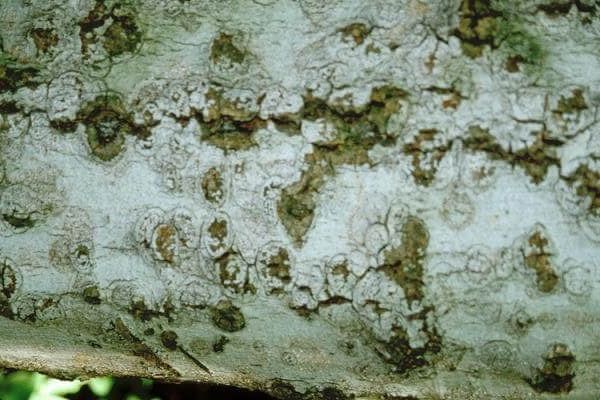Forest Health Fact Sheet Beech Bark Disease
Beech bark disease represents a unique relationship between the beech scale insect, Cryptococcus fagisuga Lindinger, and the fungal pathogen Nectria coccinea var. faginata. This disease appeared on beech trees following introduction of the beech scale from Europe to Nova Scotia at the turn of the century. Since then the scale insect has proceeded to spread throughout New England and arrived in Pennsylvania by 1958.
Beech bark disease is a canker disease caused by the Nectria fungus. Feeding by the beech scale insect facilitates entry of the fungal pathogen. The scale insect inserts a stylet (needle-like mouthpart) through the bark and into the underlying live tissues and suck up sugars and other nutrients. These wound sites are available for colonization by Nectria fungus spores that are transported passively by insects or wind. Under the right conditions, spores germinate and enter the wounds created by the scale insect.
The scale insects produce white, waxy filaments forming a small but noticeable waxy crust on tree trunks. The pale yellow scale insects reside beneath this waxy material. The insect lays eggs during summer. Young crawlers soon hatch from the eggs and move into bark fissures. Wind or wildlife may carry the crawlers to other trees.
Stands of beech recently infested with beech scale may not develop cankers for several years. Eventually however the Nectria fungus does become established. The scale insect and fungal pathogen work in combination to kill patches of inner bark. Cankers can expand and join to girdle and kill the tree. Many beech trees die but others survive despite severe canker development.
Some beech trees are resistant to the scale insect. A resistant tree is less likely to have feeding injury and subsequent attack by Nectria. Leaving resistant trees intact allows these trees to disperse seed that produces more trees that are scale resistant and fewer diseased trees in the future.
Source Link: Credit to PA.Gov

